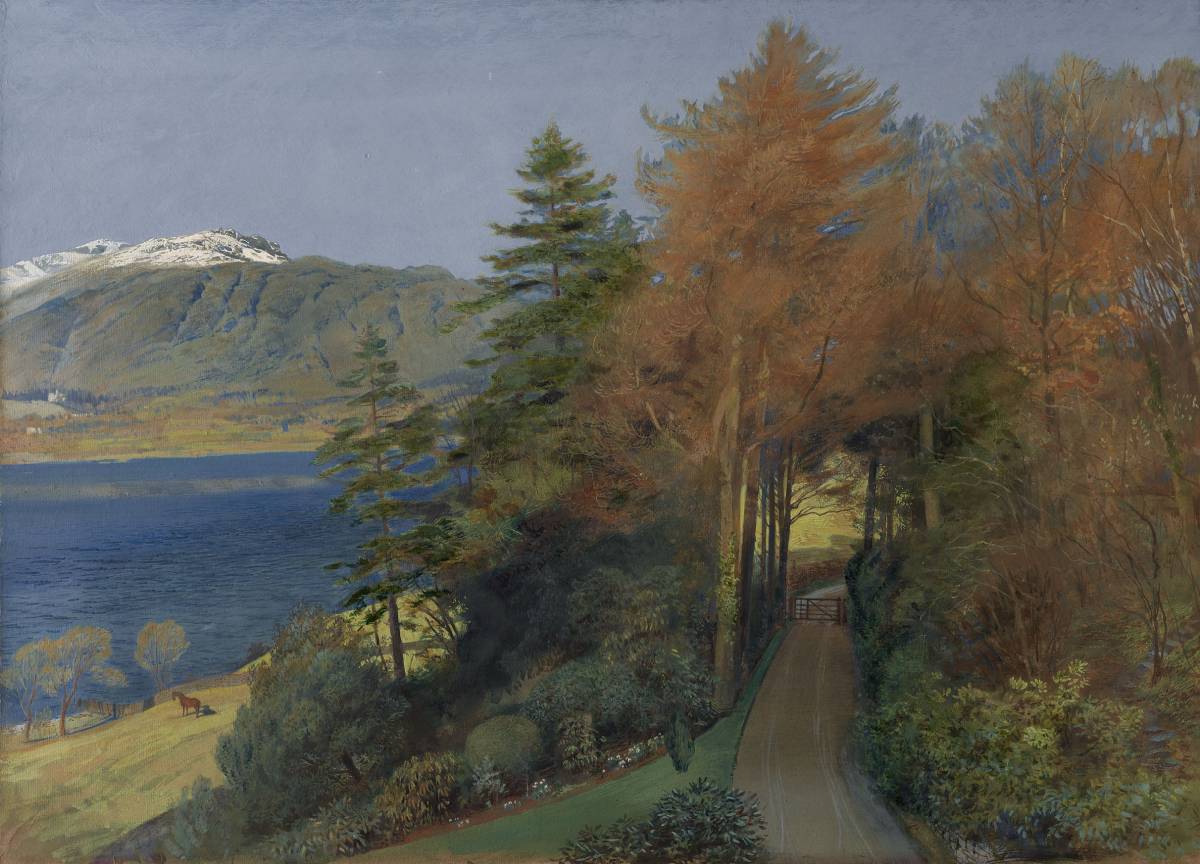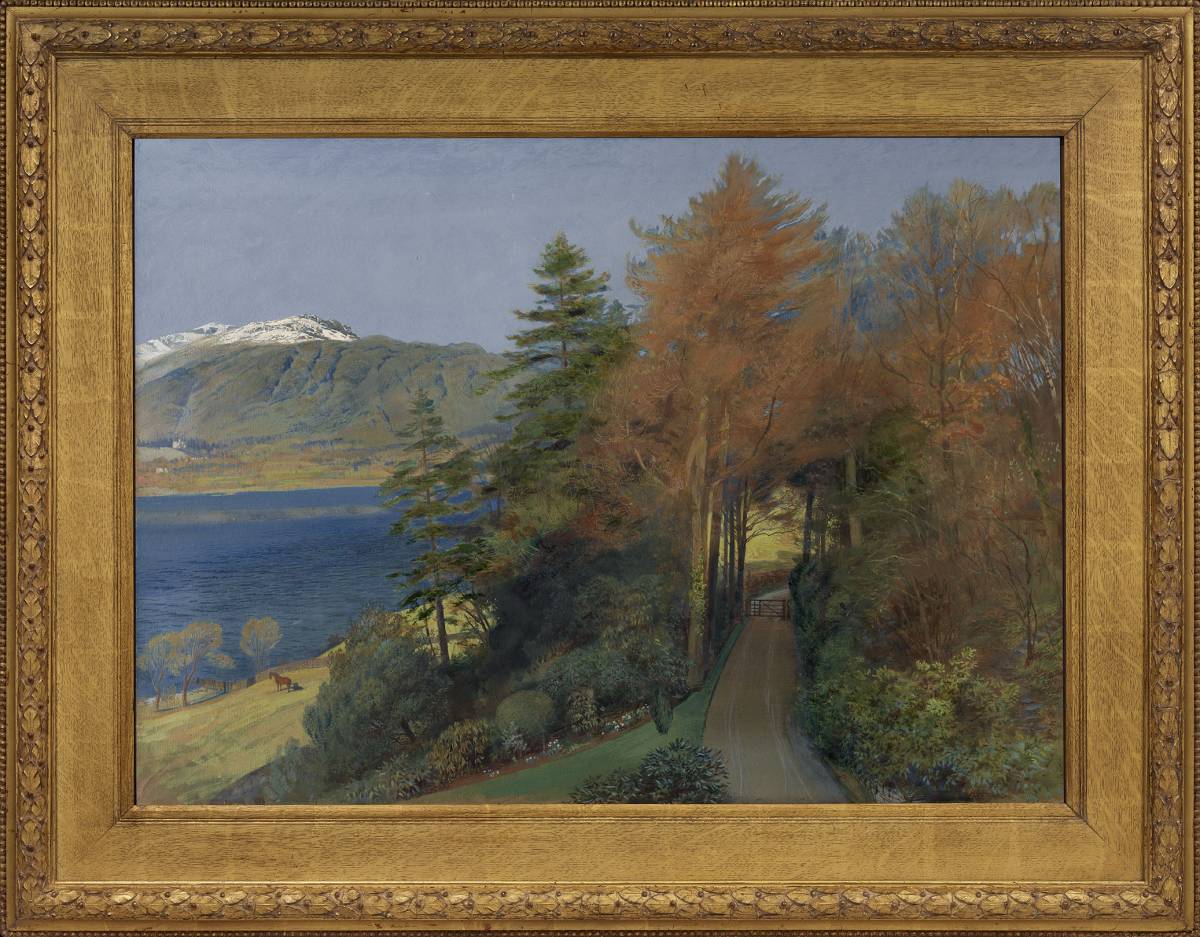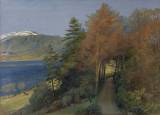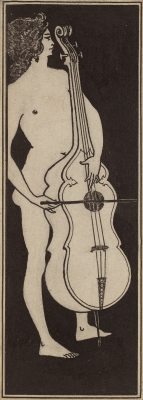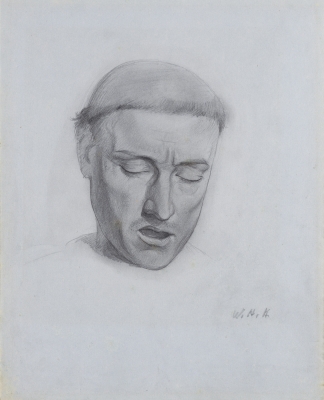This remarkable, large-scale work was made by Joseph Severn from a room in Brantwood, John Ruskin’s house on the shores of Coniston Water in the Lake District. Severn was the son of the painter Joseph Severn, who spent much of his career in Italy, latterly as British consul where he was celebrated as the friend and promotor of John Keats. Severn junior, in turn became a painter, working with John Ruskin and Albert Goodwin in Italy. Ruskin was a formative influence on both Severn’s art and life; following his marriage to Joan Agnew, Ruskin’s niece, Severn joined Ruskin’s household, eventually becoming his heir. The present monumental work shows Ruskin’s influence in the intensity of its observation and vivid palette, whilst the view was one intimately connected with Ruskin, being made from an upstairs room in Brantwood. Preserved in exceptional condition and housed in its original frame, this pulsating landscape shows how experimental and unexpected late nineteenth-century British landscape watercolours could be.
In a letter to Thomas Carlyle written in October 1871, Ruskin admitted that he bought the ‘cottage by Coniston water with a few acres of copse and rock with it…without having seen the place.’ Located in the Lake District, the area reminded him of the Alps and he described his home’s setting as ‘a bit of steep hillside, facing west, commanding from the brow of it all Coniston lake and the mass of hills of South Cumberland. The slope is half copse, half moor and rock – a pretty field beneath, less steep – a white two-storeyed cottage and a bank of turf in front of it.’ In the same year that Ruskin bought Brantwood, Joseph Severn married Joan Agnew and moved with her to Ruskin’s home at 28 Herne Hill. Over the next few decades the Severns essentially acted as Ruskin’s caretakers and gatekeepers, protecting him during his intermittent bouts of ill health. The relationship seems to have been a fractious one and Ruskin regularly retreated from Brantwood to avoid the over-bearing custodianship of the Severns. Ruskin eventually died at Brantwood in 1900 and the Severn’s inherited the house; Joseph Severn producing a hugely innovative series of landscapes from the house.
The present complex work is a technical tour de force. Severn has carefully built up the wintery scene with a complex variety of brush strokes and media: thickly, opaque gouache, layers of translucent watercolour and areas of gum Arabic to deepen certain tonal passages. Severn’s use of dry watercolour and thin, calligraphic lines of watercolour over areas of gouache impart remarkable depth and complexity to the copse of trees and distant, snow topped hill. The presence of a line of snowdrops along the border in the foreground suggest that the view was made in January and Severn successfully imparts a cool, winter light throughout the composition. Preserved in outstanding condition, this grand work is one of Severn’s masterpieces and points to his powers as a painter.
